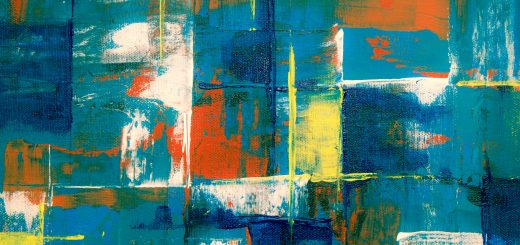Brahman and Ahamkara: Ego and Identity

Looking for more amazing products? Check out our online store and explore our collection here! Happy shopping!
Before diving in, please note: This post is for informational purposes only. If you’d like to know more about how we approach topics, feel free to check out our friendly Disclaimer Page.
Hey there, amazing readers! 
We’re committed to delivering quality posts, and your support (even just sticking around despite the ads) means everything to us. So, bear with us, and thanks for helping us keep the good vibes rolling. Now, on to the fun stuff!
TRANSLATE BUTTON AT THE END OF THE ARTICLE
A Quick Overview
In the realm of Hindu philosophy, the concepts of Brahman and Ahamkara play significant roles in understanding the nature of reality, the self, and consciousness.
Brahman represents the ultimate reality, the unchanging, eternal, and infinite source of all existence.
On the other hand, Ahamkara, often translated as ego, refers to the individualized sense of self that arises from the identification with thoughts, emotions, and experiences.
This article delves into the intricate relationship between Brahman and Ahamkara, exploring how the ego shapes identity, influences perception, and ultimately, the path towards self-realization and unity consciousness.
Understanding Brahman: The Ultimate Reality
Brahman, in Hindu philosophy, is often described as the unchanging, infinite, and eternal essence of the universe.
It is considered the ultimate reality that underlies and permeates all of creation.
Brahman is beyond conceptualization, transcending dualities such as good and evil, light and dark, or subject and object.
It is the source from which everything manifests and to which everything returns.
In the Upanishads, Brahman is often depicted as the true self, the core essence that exists in all beings.
Exploring Ahamkara: The Egoic Self
Ahamkara, on the other hand, is the sense of individualized self or ego that arises when one identifies with thoughts, emotions, and experiences.
It is the aspect of consciousness that creates a sense of separation between the self and the external world.
Ahamkara is responsible for creating the illusion of a distinct, independent self, separate from others and from the ultimate reality of Brahman.
This sense of ego is influenced by conditioning, past experiences, societal norms, and cultural beliefs, shaping one’s identity and perception of the world.
Differentiating Brahman and Ahamkara
While Brahman represents the ultimate reality, the unchanging essence of the universe, Ahamkara is the egoic self that creates a sense of individual identity.
Brahman is infinite, eternal, and all-pervasive, while Ahamkara is limited, impermanent, and conditioned by external factors.
Brahman is the source of unity consciousness, while Ahamkara perpetuates the illusion of separation.
Understanding the distinction between Brahman and Ahamkara is crucial in realizing the true nature of the self and the universe.
The Role of Ahamkara in Shaping Identity
Ahamkara plays a significant role in shaping one’s identity, beliefs, values, and behaviors.
The egoic self identifies with external labels such as roles, relationships, possessions, and achievements, creating a sense of self-worth and validation based on external factors.
Ahamkara seeks to maintain a coherent narrative of the self, perpetuating patterns of thought and behavior that reinforce the illusion of separation.
By identifying with the ego, individuals become attached to their self-image and resist any challenges to their perceived identity.
How Ahamkara Influences Perception
Ahamkara influences perception by filtering experiences through the lens of the ego, reinforcing biases, judgments, and preconceived notions.
The egoic self categorizes experiences as either favorable or unfavorable, desirable or undesirable, based on its conditioning and past experiences.
This narrow perspective distorts reality, creating a fragmented view of the world that is colored by the ego’s need for self-preservation and validation.
By identifying with the ego, individuals limit their capacity for empathy, compassion, and understanding towards others.
Overcoming Ahamkara: Dissolving the Ego
Overcoming Ahamkara involves transcending the limited perspective of the ego and realizing the interconnectedness of all beings.
Practices such as meditation, self-inquiry, mindfulness, and self-reflection can help individuals cultivate awareness of the ego’s conditioning and patterns of identification.
By observing the ego without judgment or attachment, individuals can begin to loosen the grip of the ego on their sense of self and open up to the possibility of self-realization and unity consciousness.
Dissolving the ego allows individuals to experience the true nature of reality beyond the illusions created by Ahamkara.
The Illusion of Separation: Ahamkara’s Deception
The ego, through Ahamkara, perpetuates the illusion of separation, creating a sense of individuality and division from others and the ultimate reality of Brahman.
This illusion of separation leads to feelings of isolation, alienation, and disconnection from the interconnected web of existence.
Ahamkara deceives individuals into believing in the reality of the self as a separate, independent entity, reinforcing a dualistic view of the world that perpetuates suffering and conflict.
Recognizing the deceptive nature of the ego is crucial in breaking free from the limitations imposed by Ahamkara.
Embracing Brahman: Unity Consciousness
Embracing Brahman involves realizing the interconnectedness of all beings and the underlying unity that permeates the universe.
Unity consciousness is the recognition that all forms of life are interconnected and interdependent, arising from the same source of consciousness.
By transcending the ego’s limited perspective and identifying with the ultimate reality of Brahman, individuals can experience a profound sense of oneness with all of creation.
Unity consciousness cultivates empathy, compassion, and harmony, leading to a deeper understanding of the nature of reality and the self.
Integrating Ahamkara with Brahman
Integrating Ahamkara with Brahman involves recognizing the ego’s role in shaping identity and perception while aligning with the ultimate reality of unity consciousness.
By acknowledging the ego’s conditioning and patterns of identification, individuals can begin to transcend the limitations of Ahamkara and align with the unchanging essence of Brahman.
Integrating the ego with Brahman requires a shift in perspective from individuality to interconnectedness, from separation to unity, and from illusion to reality.
This process of integration allows individuals to embrace their true nature as expressions of the ultimate reality.
Finding Balance between Ego and Identity
Finding balance between the ego and identity involves recognizing the importance of the ego in navigating the physical world while aligning with the deeper truth of Brahman.
The ego serves a practical purpose in distinguishing between self and other, ensuring survival, and navigating social interactions.
However, when the ego dominates one’s sense of self, it can lead to suffering, attachment, and delusion.
Finding balance requires cultivating awareness of the ego’s tendencies, releasing attachments to the egoic self, and aligning with the higher self rooted in Brahman.
Balancing the ego and identity allows individuals to navigate the world with clarity, authenticity, and compassion.
Cultivating Self-Realization: The Path to Brahman
Cultivating self-realization involves transcending the limitations of the ego, expanding awareness beyond the narrow confines of the individual self, and aligning with the eternal essence of Brahman.
Practices such as meditation, self-inquiry, contemplation, and mindfulness can help individuals deepen their understanding of the ego’s conditioning and patterns of identification.
By cultivating self-awareness and self-realization, individuals can begin to dissolve the illusion of separation created by Ahamkara and align with the ultimate reality of Brahman.
The path to Brahman is a journey of self-discovery, transformation, and integration, leading to profound insights into the nature of reality, consciousness, and the self.
Conclusion
In conclusion, the concepts of Brahman and Ahamkara provide profound insights into the nature of reality, the self, and consciousness.
While Brahman represents the ultimate reality, the unchanging essence of the universe, Ahamkara embodies the egoic self that creates a sense of individual identity and separation.
Understanding the intricate relationship between Brahman and Ahamkara is essential in realizing the true nature of the self and the path towards self-realization and unity consciousness.
By transcending the limitations of the ego, cultivating awareness of the ego’s conditioning, and aligning with the ultimate reality of Brahman, individuals can experience a profound sense of oneness with all of creation.
Embracing the interconnectedness of all beings and integrating the ego with Brahman leads to a deeper understanding of the nature of reality and the self.
Ultimately, finding balance between the ego and identity is crucial in navigating the physical world with clarity, authenticity, and compassion.
Cultivating self-realization is the path to Brahman, a journey of self-discovery, transformation, and integration that leads to profound insights into the nature of consciousness and the interconnected web of existence.

The Enlightenment Journey is a remarkable collection of writings authored by a distinguished group of experts in the fields of spirituality, new age, and esoteric knowledge.
This anthology features a diverse assembly of well-experienced authors who bring their profound insights and credible perspectives to the forefront.
Each contributor possesses a wealth of knowledge and wisdom, making them authorities in their respective domains.
Together, they offer readers a transformative journey into the realms of spiritual growth, self-discovery, and esoteric enlightenment.
The Enlightenment Journey is a testament to the collective expertise of these luminaries, providing readers with a rich tapestry of ideas and information to illuminate their spiritual path.
Our Diverse Expertise
While our primary focus is on spirituality and esotericism, we are equally passionate about exploring a wide range of other topics and niches 

To ensure we provide the most accurate and valuable insights, we collaborate with trusted experts in their respective domains 
Our blog originally focused on spirituality and metaphysics, but we’ve since expanded to cover a wide range of niches. Don’t worry—we continue to publish a lot of articles on spirituality! Frequently visit our blog to explore our diverse content and stay tuned for more insightful reads.
Hey there, amazing reader! 
Check out our store here and take a peek at some of our featured products below! Thanks for being awesome!











